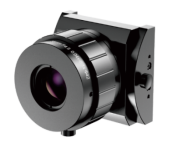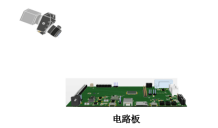Figure 5: Comparison of imaging effects between the DZOPTICS tilt-shift lens and a regular lens

Why Tilt-Shift Lenses Are So Special?
Why Tilt-Shift Lenses Are So Special?
In the field of photography, there is a special type of lens known as the tilt-shift lens. Its main feature is the ability to correct perspective distortion and achieve full-region focusing of the subject without moving the camera body, through the tilting and rotating of the front lens. In contrast, regular lenses, due to the imaging rule of "large when close, small when far" and the limitations of depth of field, often result in image distortion and partial defocusing within the field of view.
Why are tilt-shift lenses so special? In fact, there's nothing particularly magical about them. They simply make clever use of the optical principle known as Scheimpflug's rule. Scheimpflug's rule states that when the planes of the subject, the image, and the lens all intersect along a straight line, a fully sharp image can be obtained.
Analyzing from the optical path, as shown in Figure 1, before tilting, points A and B on the shooting plane have different working distances. Point A has a large working distance, corresponding to a small image distance, while point B has a short working distance, corresponding to a longer image distance. Therefore, under these circumstances, points A and B cannot be simultaneously brought into sharp focus. When the lens is tilted, the working distance for point A becomes shorter, corresponding to an increased image distance, and for point B, the working distance becomes longer, with a corresponding decrease in image distance. At a certain tilt angle, the image points A' and B' corresponding to points A and B will fall exactly on the image plane.

Figure 1: Optical Path Principle Diagram of a Tilt-Shift Lens
Tilt-shift lenses are also widely used in industrial inspection, especially in the field of 3D inspection. Most current 3D inspections are still based on the principle of laser triangulation measurement, with common products being laser profilometers, which play a core role in various 3D inspection equipment. The working principle involves a laser being emitted, reflected off the surface of the object being tested, and then the reflected light is focused onto a chip surface through a tilt-shift lens. When the height of the object being tested changes, the position of the focused point on the chip also changes. The change in height of the object can be calculated based on the displacement of the focused point.
Figure 2 shows a common laser profile measuring instrument on the market, and its lens belongs to the category of tilt-shift lenses. The lens group has a certain tilt relative to the chip plane, which satisfies Scheimpflug's rule in design, ensuring that the chip plane can focus clearly on the height direction of the object.


Figure 2: Tilt-Shift Lens Inside a Laser Profiler

Figure 3 is the DZOPTICS tilt-shift lens model SM3545A.
DZOPTICS is a professional high-tech enterprise specializing in the research, development, production, and sales of mid-to-high-end optical lenses. In response to the current hot topics in the 3D inspection industry, we have developed a series of tilt-shift lenses. Figure 3 is one of our tilt-shift lenses, which features a Scheimpflug angle adjustment mechanism at the rear, with an adjustable tilt range of ±15°. Figure 4 is a schematic diagram of using our tilt-shift lens to photograph a PCB board. Figure 5 is a comparison of the imaging effects, which clearly shows that a regular lens, due to the limitations of depth of field, cannot achieve clear focusing across the entire field of view, while a tilt-shift lens can achieve clear focusing across the entire field of view.

Figure 4: Schematic diagram of using the DZOPTICS tilt-shift lens to inspect a circuit board

a)Imaging effect using the DZOPTICS tilt-shift lens b)Imaging effect using a regular lens
